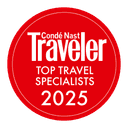©
Road trip on Sørøya Island (Photo: Up Norway)
June 30th, 2022
Driving in Norway
June 30th, 2022
Written by
Danny Dodd
Travel CuratorSign up for insider travel tips
Let us inspire you with news and offers you won’t want to miss.
About Up Norway
Practical Information
Contact Us
- +4757119988
- travel@upnorway.com
Up Norway AS
Nedre Slottsgate 5
0157 OsloOrg. no. 917092893 MVA
© 2025 Up Norway. All rights reserved.





